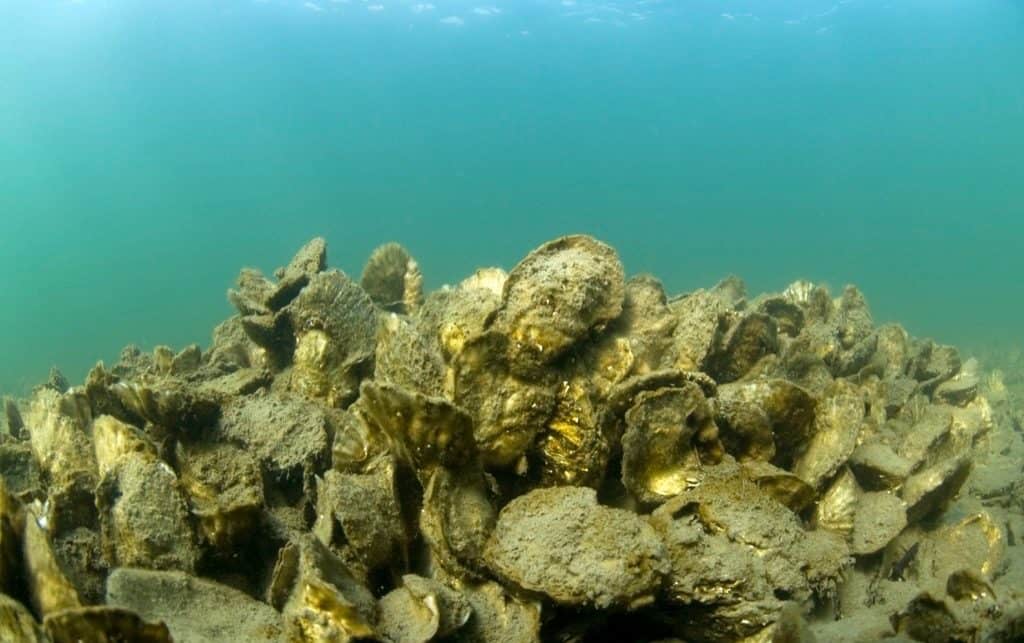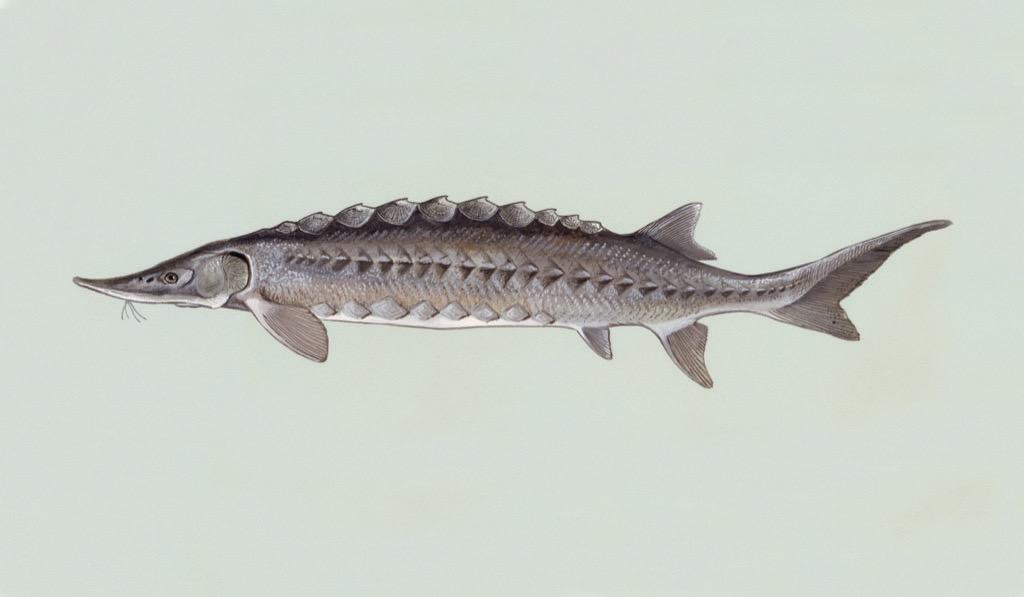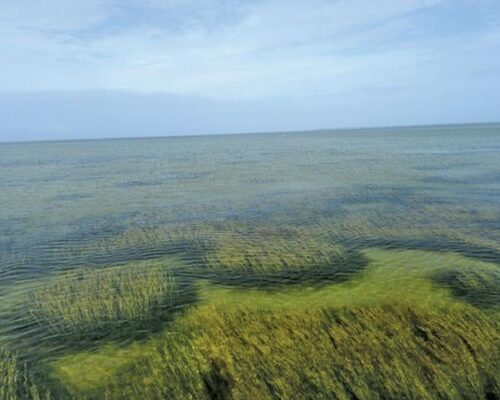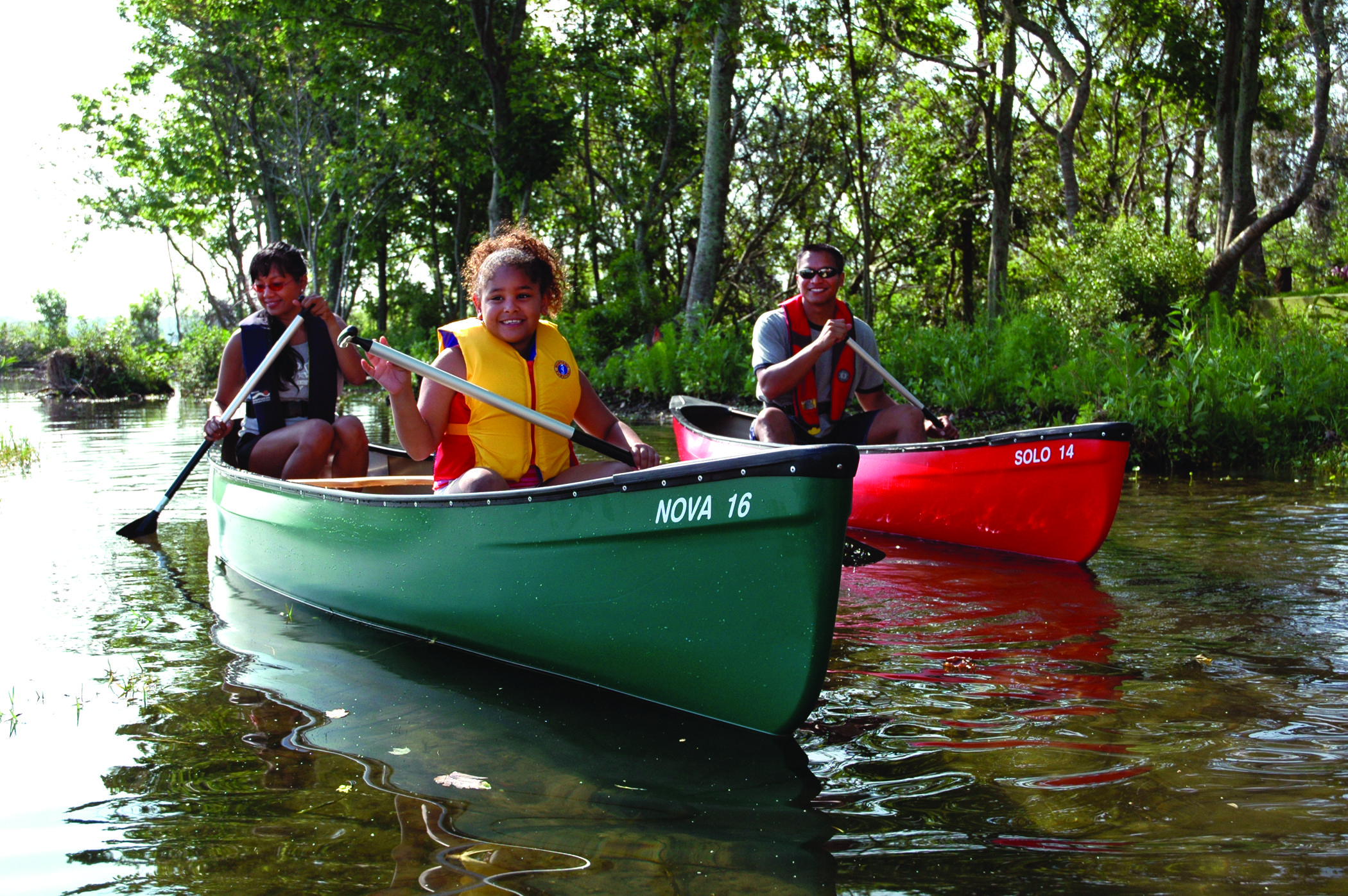A solid oyster reef takes teamwork.
Yesterday evening, I snuck into an event hosted by the Chesapeake Oyster Alliance and cheerfully tasted a range of freshly-shucked aquaculture oysters from different sections of the Bay. They were beautifully shaped, with clean, deeply cupped shells, just right for a high-class raw bar. The shape and the unadorned surfaces of the shells came from time in an oyster tumbler, a device that oyster farmers use to chip away the edges and encourage them to grow into the ideal half-shell presentation shape. The burgeoning Chesapeake Bay aquaculture industry and our resurgent love of oysters are reasons to celebrate.
The Chesapeake Oyster Alliance works collaboratively with other organizations and citizens to accelerate Chesapeake Bay oyster restoration efforts, which provide essential water filtration and fish/crab habitat ecosystem services.
Nature is messy. Life is opportunistic. Plants and animals develop to take advantage of niches in the ecosystem they inhabit. Look at how trees and shrubs grow to compete for sunlight with the other plants around them. Some grow tall to form a canopy, while shrubs and grasses bend to catch patches of sunlight that shine through the shade. Marsh grasses balance their needs for sunlight with their tolerance for water around their roots. Various species fit together in a community based on the elevations of their root systems. Differences of less than an inch in soil height can determine which one has the advantage at each level.
As summer comes to the Chesapeake, the members of these plant communities grow according to their capabilities and requirements for sunlight and the chemical building blocks in the soil. These processes have developed over millennia to form intricate webs of life that fit together in ways we can hardly imagine.
It’s easy to observe the process around a patch of woods or a marsh. Less obvious are the dramas playing out in the open waters of the Chesapeake, its rivers, and its creeks. Bay restoration scientists speak of rebuilding foundation species such our eastern oyster. But that iconic bivalve is not alone. In fact, reef restoration is a much larger enterprise than just growing oysters. The aim of these projects is to create underwater structures where diverse arrays of opportunism can fit together and flourish.
For example, the NOAA standard for planting restoration reefs is five million spat-on-shell per acre, with the objective of having 15 to 50 of those baby oysters survive to maturity per square meter. A waterway like Maryland’s Harris Creek or Virginia’s Lafayette River (both now declared fully restored by NOAA standards) have lots of square meters of reef surface built of combinations of shell, stone, and concrete overlaid by spat set-on-shell. But the aim for the ecological community isn’t just millions of oysters. It’s a biologically diverse community of tens of millions of opportunistic critters that can take advantage of what the surrounding waters bring them in ways where they complement one another.
Sound complicated and abstract? Well, yes to the former, but no to the latter. Complexity increases the chance that there’s a species to fit every niche. But the next question becomes as concrete as “who eats what.” Here is where a restored reef begins to earn its keep.
Most Chesapeake waters offer too much of one class of food—phytoplankton, which are microscopic algae that drift and grow on sunlight energy and the nitrogen and phosphorus fed to them by stormwater and air pollution. Our waters need grazers such as oysters to consume those algae cells. For several millennia, the trillions of critters on our oyster reefs occupied those niches, but over the past century-and-a-half, the grazing communities declined even as we destroyed our reefs. The problem became especially acute because we were fertilizing more and more algae growth as the grazers declined.
Hence the push for reef restoration today, which has produced success stories like Harris Creek and the Lafayette River, with at least eight others slated for restoration in the immediate future. We have learned that investing in three-dimensional reefs really works. More and more people becoming fascinated by oysters are participating in reef projects in their home waters. But reef restoration is expensive enough that, in addition to monitoring its effectiveness, the Chesapeake’s scientific community is studying ways to do it most efficiently. That process is focusing on several unassuming reef critters: hooked mussels and sea squirts, which are the messy brown shellfish and “sea grapes” that crowd oyster shells. Just like the oysters, they are grazing on the phytoplankton that washes over them.
Over the past six years, a cross-disciplinary team of scientists from the Smithsonian Environmental Research Center, the University of Maryland, and the Virginia Institute of Marine Science have collaborated to evaluate sea squirt and hooked mussel biomass and the rate at which they filter water. It turns out that individual mussels don’t filter as much water as individual oysters; roughly 25 gallons per day versus 45-50 gallons per day in summer conditions. But the biomass of mussels on restored reefs may be greater than that of the oysters, so they may filter just as much water and graze as much phytoplankton.
The mussels also graze the tiniest phytoplankton cells more efficiently than oysters, thus playing a key role in the teamwork. The mussels turn those plant cells into meat, which becomes food for other reef critters that can crush their shells—blue crabs, black drum, and sea ducks.
The sea squirts open up a new avenue of research. Although they appear to be inert, their larval forms have rudimentary backbones, linking them evolutionarily closer to vertebrates than to mussels and oysters. They draw in water through siphon tubes, absorb food material, which includes phytoplankton, and send their wastewater our through other siphons. They provide food to various predators, including crabs and white perch. Dense groups of squirts can add significant filtration to the efforts of oysters and mussels.
At this point, encouraging hooked mussels and sea squirts to join reef communities appears to be a build-it-and-they-will-come proposition, but their value is significant enough that future reef planning may include specific efforts to encourage them. Next time you see them on oyster shells, remember to say thank you.
CBM Editor at Large John Page Williams is a licensed captain and Maryland fishing guide. He has been on staff at the Chesapeake Bay Foundation as an educator, writer, and senior naturalist, saving the Bay since 1973.




